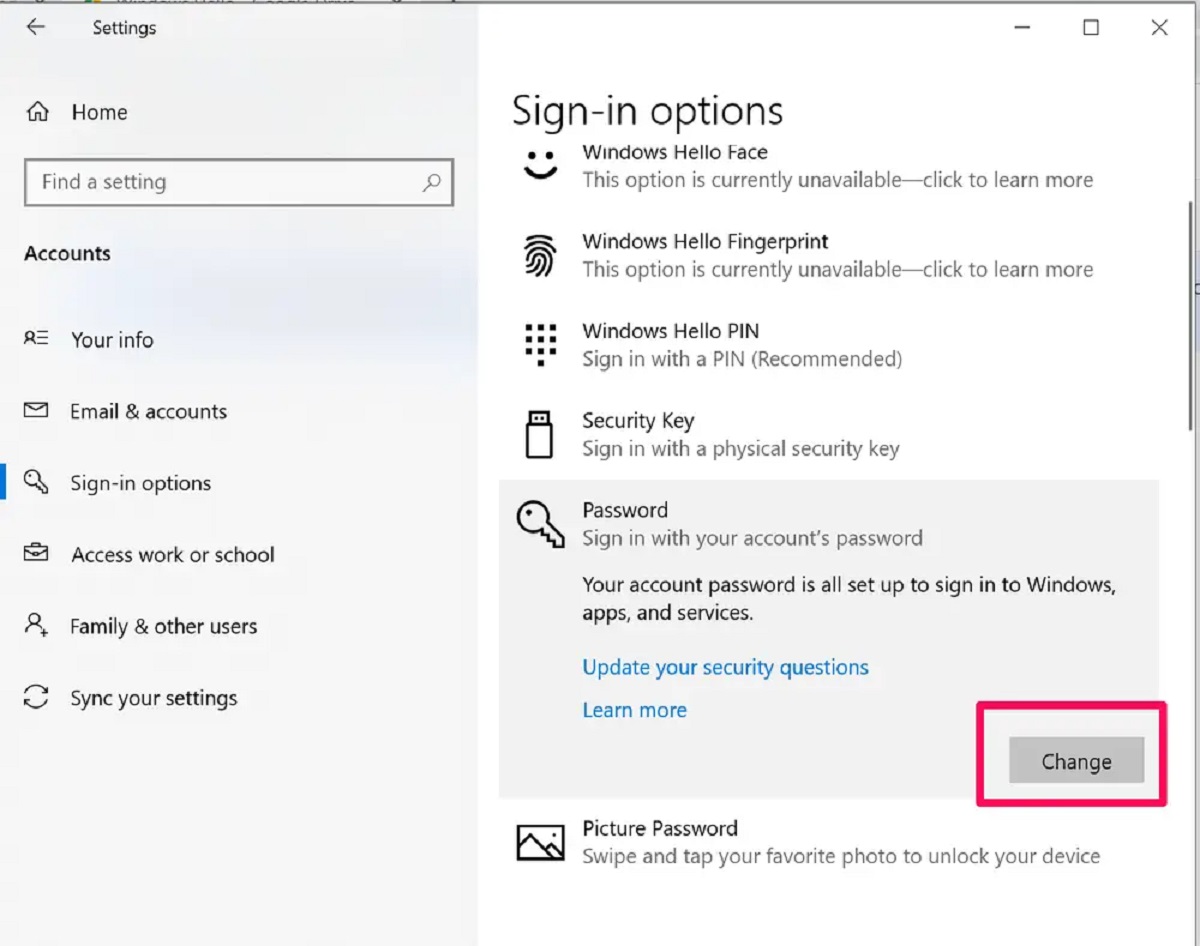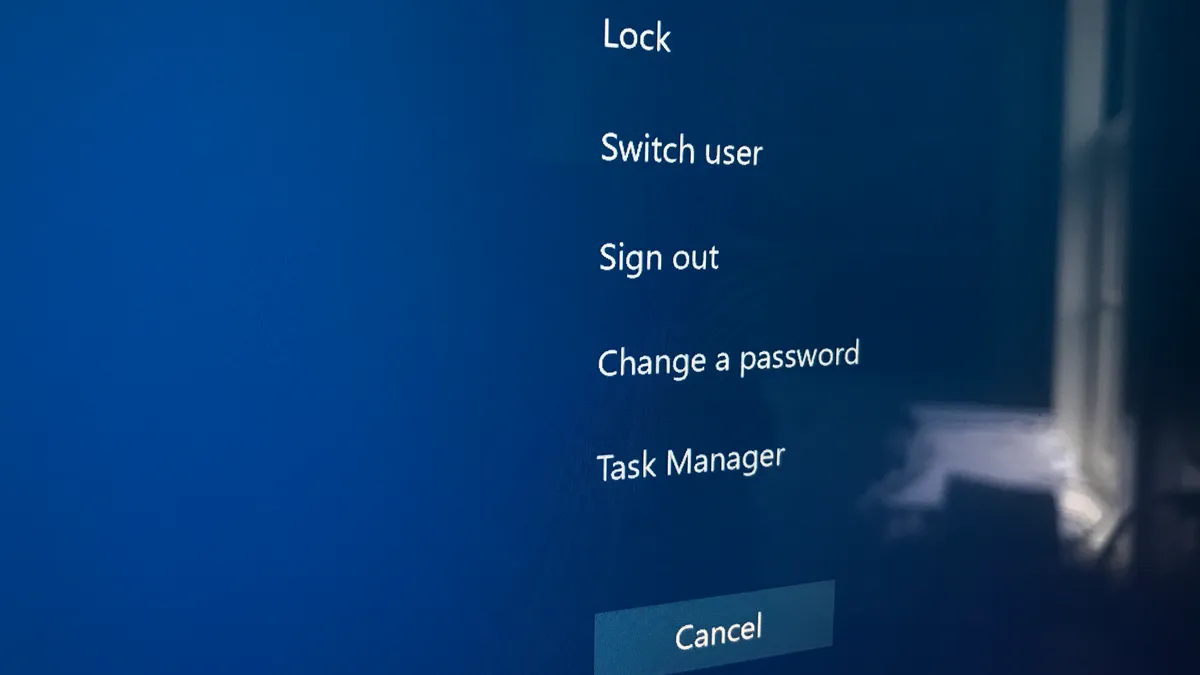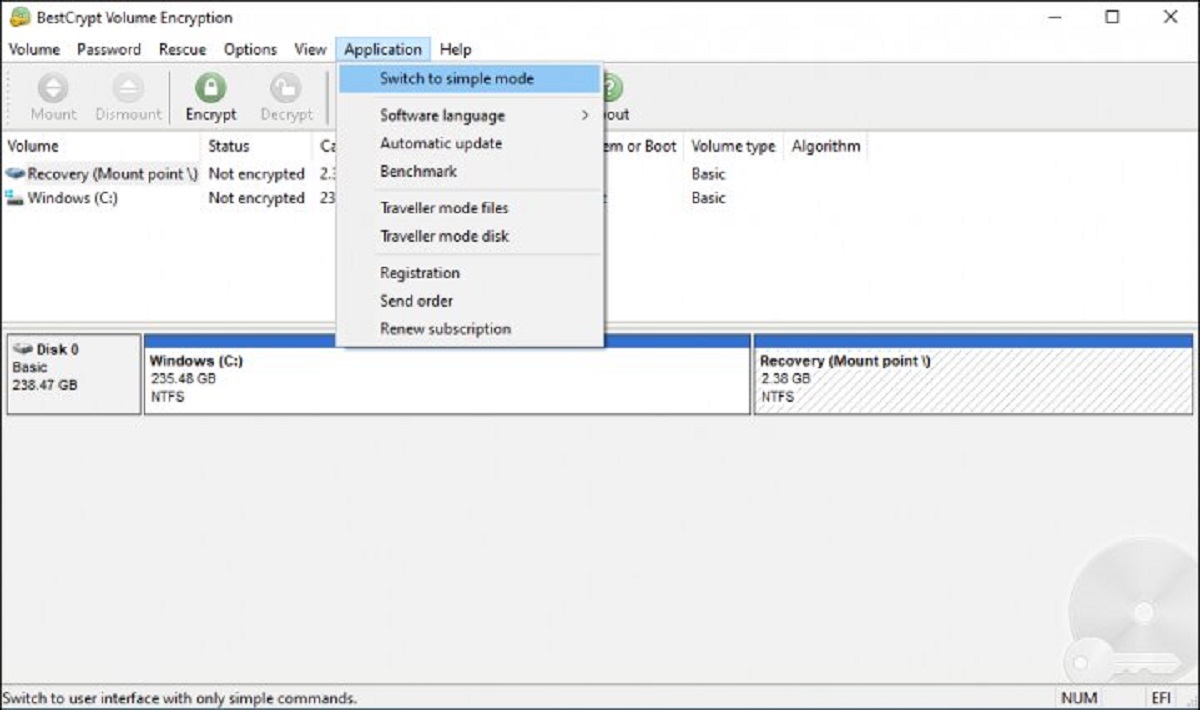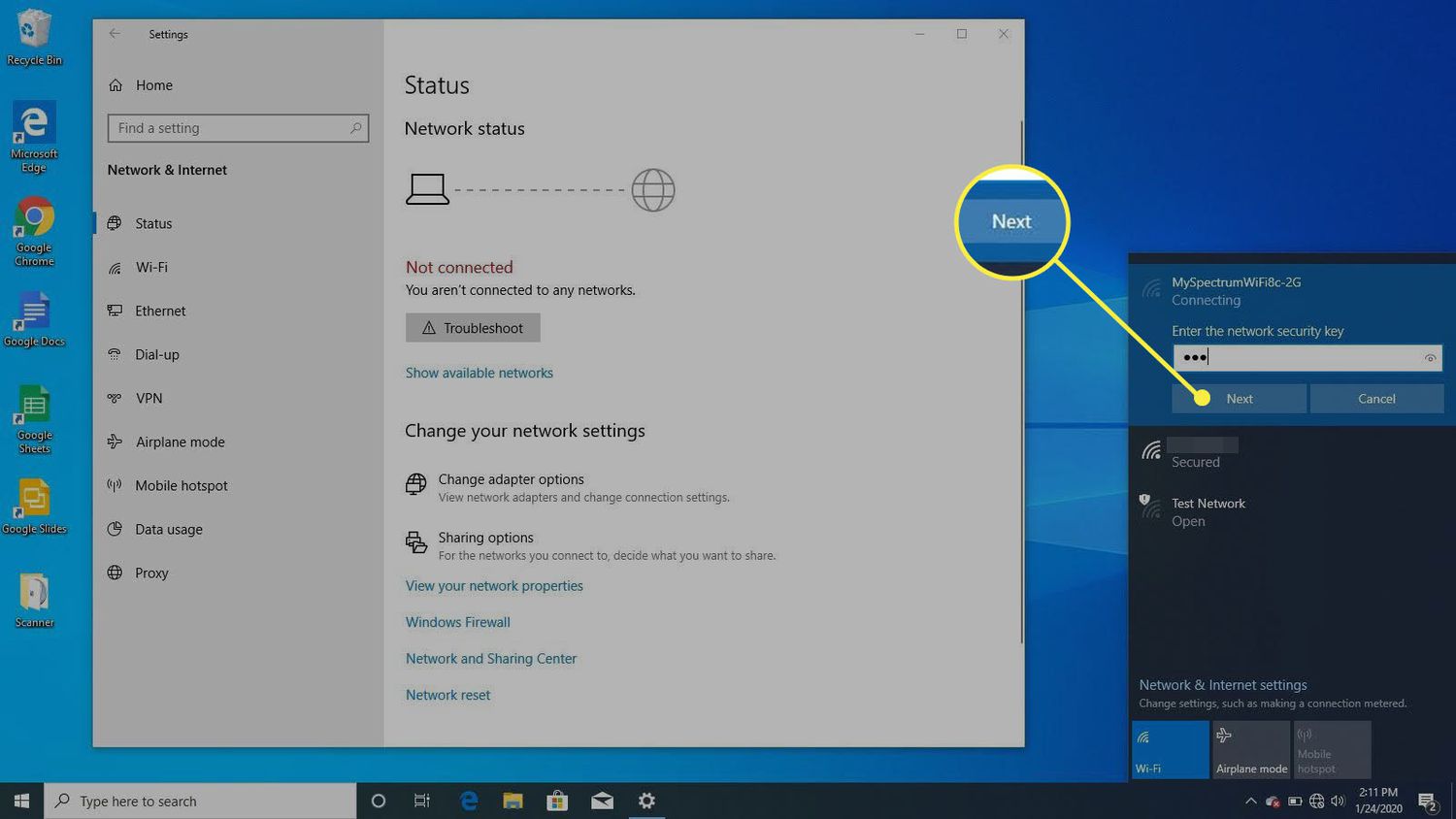Introduction
Changing your PC password is a vital security measure that helps protect your personal information and ensures that unauthorized individuals cannot access your device. Whether you have noticed suspicious activity on your account or simply want to update your password for precautionary reasons, learning how to change your PC password is an essential skill.
In this article, we will guide you through the step-by-step process of changing your PC password. We will provide easy-to-follow instructions that are suitable for users of different operating systems, including Windows 10, macOS, and Linux. By the end of this guide, you will have the knowledge and confidence to modify your password and safeguard your computer from potential threats.
Changing your password regularly is an important security practice, as it helps prevent unauthorized access and ensures the confidentiality of your personal data. It is recommended to update your password at least every three to six months or sooner if you suspect any security breaches.
While there are various factors to consider when choosing a new password, such as complexity and memorability, this article will focus primarily on the process of changing your password within the settings menu of your PC. Before we proceed, ensure that you have administrative privileges on your device, as these may be required to modify password settings.
Ready to enhance the security of your PC? Let’s dive in and learn how to change your PC password!
Why Change Your PC Password?
Changing your PC password on a regular basis is essential for maintaining the security of your device and protecting your sensitive information. Let’s explore the key reasons why you should consider changing your PC password:
- Prevent unauthorized access: One of the main reasons to change your PC password is to prevent unauthorized individuals from gaining access to your device. By regularly updating your password, you ensure that even if someone manages to obtain your previous password, they won’t be able to use it to log in.
- Enhance security: With the constant evolution of technology, cyber threats are continuously increasing. Hackers and cybercriminals use various techniques to try and breach your device’s security. By changing your password, you increase the complexity of your login credentials, making it more difficult for hackers to guess or crack your password.
- Maintain privacy: Your PC likely contains a treasure trove of personal and sensitive information, including financial data, personal documents, and confidential emails. Changing your password regularly helps ensure that this information remains private and protected from prying eyes.
- Respond to security breaches: If you ever suspect that your PC has been compromised or your account has been subject to a security breach, changing your password immediately is crucial. This prevents any further unauthorized access and minimizes the potential damage caused by the breach.
- Comply with security policies: In some cases, companies or organizations may have specific security policies in place that require employees to change their PC passwords regularly. Adhering to these policies helps maintain a secure environment and ensures compliance with relevant security standards.
By understanding the importance of changing your PC password, you can take proactive steps to protect your device and personal information from potential threats. Now that we have explored the reasons behind changing your password, let’s proceed to the next section and learn how to change your PC password.
How to Change Your PC Password
Changing your PC password is a straightforward process that can be done within the settings menu of your device. Follow the step-by-step instructions below to modify your password:
Step 1: Open the Settings Menu
To begin, open the Settings menu on your PC. You can usually find the Settings icon in the Start menu or the taskbar. Click on the icon to access the Settings menu.
Step 2: Go to the “Accounts” Section
Once you are in the Settings menu, look for the “Accounts” section. Depending on your operating system, it may be labeled as “Accounts” or “User Accounts.” Click on this section to proceed.
Step 3: Select “Sign-in Options”
Within the “Accounts” section, you will find various sign-in options. Look for the option that says “Sign-in options” and click on it. This will take you to the password settings page.
Step 4: Click on “Change” under the “Password” Section
In the sign-in options page, you will see the “Password” section. Under this section, click on the “Change” button to start the password modification process.
Step 5: Enter Your Current Password
A prompt will appear, asking you to enter your current password. This step is necessary to authenticate your identity and ensure that only authorized users can change the password. Enter your current password in the provided field.
Step 6: Create a New Password
Once your current password is verified, you can proceed to create a new password. Choose a strong and unique password that includes a combination of uppercase and lowercase letters, numbers, and special characters. Ensure that your new password is not easily guessable.
Step 7: Confirm Your New Password
After creating your new password, you will be prompted to confirm it. Re-enter your new password in the designated field to ensure that there are no typos or errors.
Step 8: Update Your Password Hint (Optional)
Some operating systems allow you to set a password hint, which can help you remember your password in case you forget it. If desired, you can update your password hint in this step. Keep in mind that the hint should be something that only you can understand, without revealing the actual password.
Step 9: Restart Your PC to Apply the Changes
Once you have successfully changed your password and updated the password hint (if applicable), it is recommended to restart your PC. Restarting your device ensures that the password change takes effect and that you can log in with your new password.
Congratulations! You have successfully changed your PC password. By following these simple steps, you can maintain the security and privacy of your device. Remember to keep your password confidential and avoid sharing it with anyone.
Step 1: Open the Settings Menu
The first step in changing your PC password is to open the Settings menu on your device. The location of the Settings icon may vary depending on the operating system you are using, but it is typically found in either the Start menu or the taskbar.
If you are using Windows 10, you can click on the Start menu icon in the bottom-left corner of your screen. In the Start menu, you should see the Settings icon, which resembles a gear. Click on this icon to open the Settings menu.
If you are using macOS, you can find the Settings icon in the dock, which is usually located at the bottom of your screen. Look for the gear-shaped icon and click on it to access the Settings menu.
For Linux users, the process may vary slightly depending on the distribution you are using. In most cases, you can find the Settings menu by clicking on the power icon in the top-right corner of your screen. A dropdown menu will appear, and you can select the Settings option from there.
Once you have successfully opened the Settings menu, you are ready to proceed to the next step in changing your PC password. Remember to have administrative privileges on your device, as these may be required to modify password settings.
Now that you have opened the Settings menu, let’s move on to the next step and learn how to navigate to the “Accounts” section, where you can modify your PC password. Follow along to continue the password change process.
Step 2: Go to the “Accounts” Section
After opening the Settings menu, the next step in changing your PC password is to navigate to the “Accounts” section. The location and labeling of this section may vary slightly depending on the operating system you are using, but it is typically labeled as “Accounts” or “User Accounts.”
If you are using Windows 10, you will find the “Accounts” section in the Settings menu. Scroll down or navigate through the different categories until you see the “Accounts” option. Click on it to proceed.
For macOS users, the “Accounts” section is usually labeled as “Users & Groups” or “Users.” Look for these options in the Settings menu and click on them to access the account settings.
In Linux distributions, the location and labeling of the “Accounts” section may vary. Look for options such as “User Accounts” or “Users and Groups” in the Settings menu. Click on the corresponding option to continue.
Once you have successfully entered the “Accounts” section, you will have access to various account-related settings. This is where you can modify your PC password and make other changes related to user accounts.
By reaching the “Accounts” section, you are one step closer to changing your PC password. In the next step, we will guide you on how to select the “Sign-in options” within the “Accounts” section. Continue reading to move ahead with the password change process.
Step 3: Select “Sign-in Options”
Once you have entered the “Accounts” section of the Settings menu, the next step in changing your PC password is to select the “Sign-in options.” This is where you can access and modify various settings related to how you sign in to your device.
If you are using Windows 10, scroll through the account settings until you find the “Sign-in options” tab. Click on it to proceed.
For macOS users, look for options such as “Login Options” or “Sign-in Options” within the “Users & Groups” or “Users” section. Click on the specified option to access the sign-in settings.
In Linux distributions, the “Sign-in options” may be labeled differently. Explore the settings related to user accounts until you find the section where you can modify how you sign in to your device.
Once you have successfully accessed the “Sign-in options” section, you will see a range of settings pertaining to your login credentials and authentication methods. This is where you can change your PC password and make other related changes.
By selecting the “Sign-in options” within the “Accounts” section, you are making progress in changing your PC password. In the next step, we will guide you through the process of clicking on “Change” under the “Password” section. Keep reading to proceed with the password modification process.
Step 4: Click on “Change” under the “Password” Section
After accessing the “Sign-in options” section in the account settings, the next step in changing your PC password is to click on the “Change” option under the “Password” section. This will initiate the password modification process.
If you are using Windows 10, look for the “Password” section within the “Sign-in options” tab. Under this section, you will find the “Change” option. Click on it to proceed.
For macOS users, navigate to the “Password” section within the “Login Options” or “Sign-in Options.” Next, locate and click on the “Change Password” button.
In Linux distributions, the location and labeling of the “Password” section may vary. Look for options related to password settings or authentication methods. Once you find the “Password” section, click on the corresponding button to change your password.
By clicking on “Change” under the “Password” section, you are signaling your intent to modify your PC password. This step will lead you to the authentication process, where you will need to verify your current password before proceeding to create a new one.
Now that you have successfully clicked on “Change” under the “Password” section, let’s move on to the next step and learn how to enter your current password. Continue reading to proceed with the password change process.
Step 5: Enter Your Current Password
After clicking on “Change” under the “Password” section, you will be prompted to enter your current password. This step is essential to authenticate your identity and ensure that only authorized users can modify the password settings on your PC.
Enter your current password in the designated field on the screen. Take care to input it accurately, as passwords are case-sensitive. If you are unsure about your current password or have forgotten it, you may need to consider other options, such as password recovery or reset.
Once you have entered your current password, you may need to click on a “Next” or “Continue” button to proceed to the next step. The specific interface and flow may differ slightly depending on the operating system you are using.
It is important to enter your current password correctly to ensure the security of your account. Double-check that there are no typos or mistakes before moving forward. If you are uncertain about your current password, it may be a good idea to verify it before proceeding further.
By successfully entering your current password, you have completed an important step in changing your PC password. In the next step, we will guide you on how to create a new password that meets security requirements. Continue reading to proceed with the password modification process.
Step 6: Create a New Password
After entering your current password, the next step in changing your PC password is to create a new one. This is a crucial step to enhance the security and protection of your device and personal information.
When creating a new password, it is important to follow security best practices to ensure its strength and effectiveness. Consider the following tips:
- Use a combination of uppercase and lowercase letters
- Include numbers and special characters
- Avoid common and easily guessable patterns or phrases
- Make it at least 8-12 characters long
- Avoid using personal information, such as your name or birthdate
Take your time to come up with a strong and unique password that meets the above criteria. Remember, the strength of your password plays a significant role in protecting your device from unauthorized access.
When creating a new password, some systems may provide a password strength indicator to help you gauge the effectiveness of your chosen password. Aim for a high level of complexity and avoid easily guessable patterns or sequences.
Once you have chosen a strong password, enter it in the designated field on the screen. As you type, make sure to pay attention to the characters you are inputting to avoid any mistakes or typos.
By creating a new password that aligns with security best practices, you are taking a proactive step in fortifying the security of your PC. In the next step, we will guide you on how to confirm your new password. Keep reading to proceed with the password change process.
Step 7: Confirm Your New Password
After creating a new password, the next step in changing your PC password is to confirm it. This ensures that you have accurately entered your desired password and helps prevent any errors or typos.
In the password confirmation step, you will typically see a field labeled “Confirm Password” or “Re-enter Password.” Type your new password exactly as you previously entered it in the designated field.
When confirming your new password, pay close attention to the characters you are inputting to ensure that it matches your intended password. Passwords are case-sensitive, so make sure to match the uppercase and lowercase letters, as well as any numbers or special characters.
Double-check that there are no discrepancies between your new password and the confirmed password field. Carefully review the characters and ensure that they match exactly.
If the confirmed password matches the new password, you can proceed to the next steps. However, if there is a mismatch, you may need to re-enter your new password or make any necessary corrections to ensure they match.
By successfully confirming your new password, you have completed an essential step in the password change process. In the next step, we will guide you on how to update your password hint (if desired). Keep reading to proceed further.
Step 8: Update Your Password Hint (Optional)
After confirming your new password, you may have the option to update your password hint. A password hint is a clue or reminder that can help you recall your password if you ever forget it. This step is optional, but it can be useful in case you need a subtle reminder without compromising the security of your password.
If your operating system allows you to update the password hint, you will typically see a field labeled “Password Hint” or something similar. In this field, you can enter a clue or prompt that can help trigger your memory without explicitly revealing your password.
When creating a password hint, it is important to choose something that only you will understand. Avoid using obvious phrases or information that can be easily guessed by others. The goal is to create a subtle reminder that is meaningful to you but inconspicuous to potential password hackers.
Some examples of effective password hints might include a clue related to a specific date, a quote from a favorite book or movie, or a hint related to a personal interest or hobby. Remember, the intention is to trigger your memory without making it easy for others to guess your password.
However, it’s worth noting that not all operating systems or versions provide the option to update the password hint. In such cases, you can skip this step and proceed to the next one.
By updating your password hint (if applicable), you are adding an extra layer of convenience in case you ever forget your password. In the next step, we will guide you on how to restart your PC to apply the changes you have made. Continue reading to complete the password change process.
Step 9: Restart Your PC to Apply the Changes
After successfully changing your PC password and updating any optional settings, it is important to restart your computer to apply the changes you have made. Restarting your PC ensures that the new password is fully implemented and takes effect during the login process.
To restart your PC, click on the Start menu or the equivalent on your operating system and select the “Restart” or “Restart/Shut down” option. Alternatively, you can press the power button on your device and choose the restart option from the menu that appears.
During the restart process, your computer will shut down and then start again. Once your PC has finished rebooting, you will be prompted to enter your new password during the login screen.
Ensure that you remember your new password and type it accurately when prompted. Take note of the characters’ case and any other specific requirements, such as special characters or numbers.
After successfully logging in with your new password, you can proceed to use your PC as usual, now with the enhanced security provided by your updated password.
Remember to keep your new password confidential and avoid sharing it with others. If you ever need to change your password again in the future, you can refer back to this guide to repeat the process.
By restarting your PC, you have completed the final step in the password change process and ensured that your new password is active. Congratulations on successfully changing your PC password!
Conclusion
Changing your PC password is a crucial step in maintaining the security and integrity of your device. By regularly updating your password and following best practices, you can protect your personal information and reduce the risk of unauthorized access.
In this article, we have provided a comprehensive guide on how to change your PC password. Starting from opening the settings menu to restarting your PC, we have walked you through each step of the process.
Remember, changing your password is not a one-time action. It is recommended to periodically update your password to ensure its effectiveness in preventing unauthorized access. Additionally, following password security best practices, such as using a combination of alphanumeric characters and special symbols, can further enhance the strength of your password.
Lastly, it’s crucial to keep your password confidential and avoid sharing it with others. If you frequently use your PC in public or shared places, be cautious when entering your password to protect it from prying eyes.
By taking the time to change your PC password and follow these security measures, you are actively safeguarding your personal information and ensuring the privacy of your digital assets. Stay vigilant, stay safe, and enjoy the peace of mind that comes with knowing your PC is protected.

























